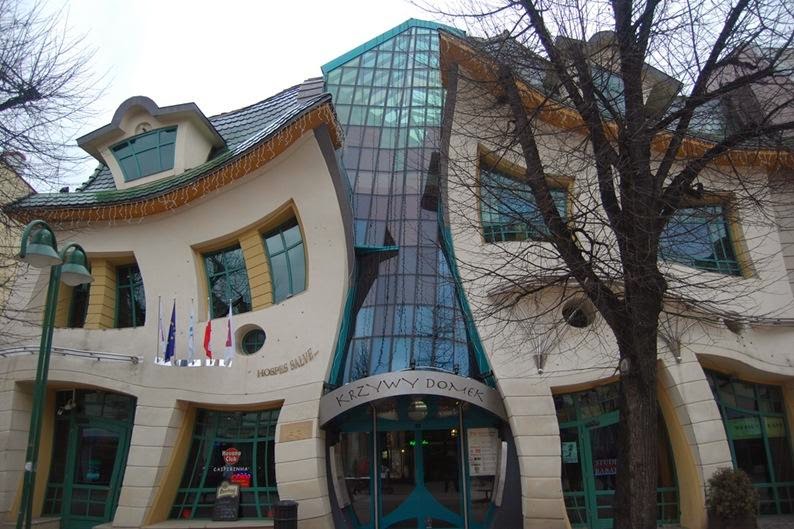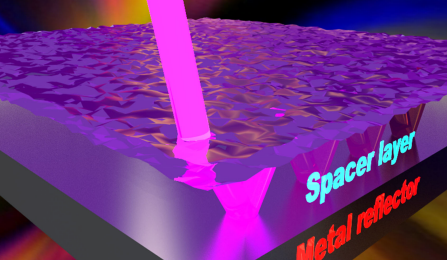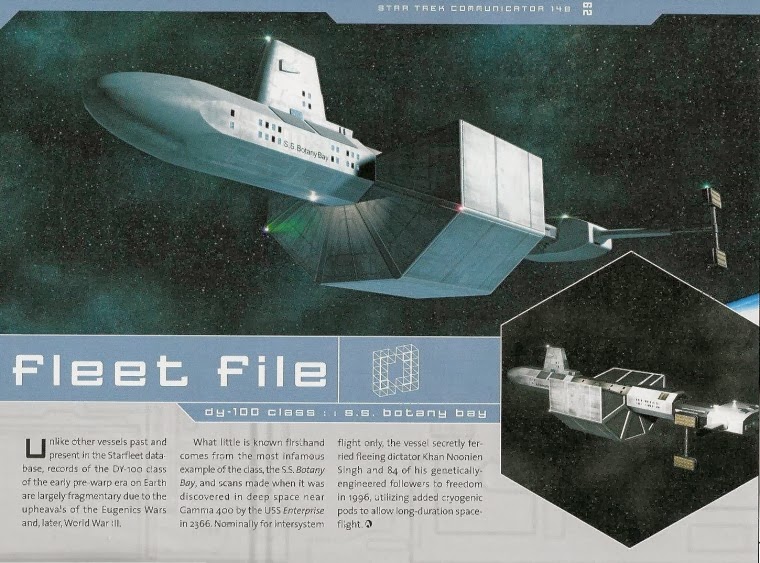Get American Specter for $1.99 on Kindle!
http://www.amazon.com/gp/pdp/profile/A1WQ72QKMB0D5W/ref=cm_cr_dp_pdp
Get American Specter for $1.99 on Kindle!
http://www.amazon.com/gp/pdp/profile/A1WQ72QKMB0D5W/ref=cm_cr_dp_pdp
1. Mind House (Barcelona, Spain)
.jpg) |
| credit: Angelo Amboldi |
2. The Crooked House (Sopot, Poland)
.jpg) |
| credit: tomek.pl via strangebuildings.com |
3. Stone House (Guimarães, Portugal)
.jpg) |
| credit: Feliciano Guimarães via strangebuildings.com |
 |
| Timberwood Park, San Antonio, TX: Caveat emptor |
Physics World: Neil Turok urges caution on BICEP2 results
That's Right! The OTHER SCI FI Talkshoe Live Podcast "Discussions from the Otherhood which we record just about every Saturday at 4pm EST is now a free Podcast on iTunes!
To find us go to:
http://itunes.apple.com/WebObjects/MZStore.woa/wa/viewRoom?fcld=529293810
And initiate a Search for "Other Sci Fi" in the Podcasts section of the menu.
Listen in and maybe... just maybe you'll decide to join us one of these Saturday afternoons!
If you have any problems locating us at iTunes, contact me here or at p.flynn@otherscifi.com for additional information!
~P.Flynn
NIST: Magnetic Attraction: Physicists Pay Homage to the SQUID at 50
Stanford News:
New evidence from space supports Stanford physicist's theory of how universe began
Harvard Center for Astrophysics: First Direct Evidence of Cosmic Inflation
 |
| Artist's impression of a comet striking the Earth. (Courtesy: iStock/PaulPaladin) |
Book Excerpt: The Sky is Not the Limit, by Neil deGrasse Tyson on BillMoyers.com
Site: COSMOS: A SpaceTime Odyssey
Mother Jones: Neil deGrasse Tyson on "Cosmos" (source of podcast below)
Hello,
My name is Antwan Floyd Sr. I am a publisher and author of several titles. I am venturing into the graphic novel genre. This will be my first title in this genre. I am currently seeking an artist to illustrate for the novel. The novel will typically be written in 15-20 pages. Not sure as to rather the book will be in black and white, color, or both. Anyone interested please leave a message in my inbox with a link to where I can see your previous work or leave a sample in in my inbox with your rates and turnaround time.
Thank you,
Antwan Floyd Sr.
 |
| Source: http://wizewomon.blogspot.com/2011/12/hypatia-womon-of-note.html |
Went to a place on the continent we all know and love. The host told me eons ago some visitors built a large box with a glass top and buried it in the sand. We put the market on top of it, been that way ever since. It was a shanty town. Women sitting on door stoops making things to sell and kids running in the street. Ragged shantys as far as one could see. They all were similar, corrugated top, sides and an Nubian arched doorway. I thought it was an unusual feature. To spend so much effort to have such an elegant door when the rest of the house was so shabby, there must be a reason.
I stayed in the visitors sector, a hotel with views overlooking the whole town, had everything to make a guest happy only not so big. Hey you wouldn't want to out shine the locals too much now would you? I asked the clerk, why the people were so content in such obvious poverty. He chuckled and under his breath he said practice. He said out loud talk to my host which I did.
My host Carl was a fine man with the most mischievous children, I still think he was running game on me. His youngest picked my pocket, was off down the street with my wallet. Carl laughed, I was not amused and dashed after him. He ran into a twisted rusted old shack, I was dead on his heels. Through the arch of the doorway he went and just as he was a few feet on the other side I let out a gasp that would startle a herd of camels. Opulence, colors, bright colors, flowing curtains, a sweet breeze instead of rusted iron air and birds singing. I felt the tiny hand push my wallet into my hand and the small voice apologized. Carl came in he couldn't contain himself, doubled over in laughter. This is our space via the arch. It folds space so that we each can have as much space as we want. I asked, is it virtual, or something he put in my food? He showed me many rooms all laid out and a spacious court yard and a deck over the sea. We came back through the arch, same old dusty street. I tore away, ran back into the shack to see if I was dreaming. Crashed into a table not far from the door in the middle of the shack. A stack of pots I knocked over made a terrible racket. When I came out Carl was in fits. His neighbor smiled and said the arch teaches great wisdom too. Permission to enter is by it's owner only.
I never told a soul, till today.
 |
| A rendering shows a beam of light interacting with an optical nanocavity. The nanocavity boosts light absorption in ultrathin semiconductors. Credit: Advanced Materials |
University of Buffalo: An (optical) cavity that you want
"As soon as a character of color is introduced in a story, imagination stops". Toni Morrison
As a young boy, I loved The Twilight Zone, The Planet of the Apes and anything that provided insight into other worlds and possibilities.
It is only as we age, that we learn dreaming and committing to difference, exploration and comfortability with difference can and often does make you an outsider.
A young black child who loves Science Fiction is asking for a heap of trouble and ridicule.
Collectively, we (black folks) have been tortured and brutalized as a result of "difference" and should look to new worlds as places that not only allow dreaming but adamantly encourage it.
Black folks need all the thinking and devotion to self defining that Sci Fi will allow.
As a teacher to young Black and Hispanic teenagers in an alternative high school, I discovered what prevented several of my students from expecting and striving for excellence. None of them had ever seen anyone who looked like them leading a revolution, being self defining or self creating.
It is difficult to design a life of forward movement if there is no tangible example of what is possible.
My baby sister is a lawyer.
She has watched her mother and several family friends attend law school and obtain jobs in their chosen field.
Dreaming of and then becoming an attorney was not an impossibility for her.
We all need vivid and tangible examples of accomplishments and what the price is for achieving our life's objectives.
Science Fiction lets our imaginations soar. We need creativity that reinvents us and what we can achieve.
At 27, I finally got around to reading Octavia Butler's Parable of the Sower.
In this wonderful book, the protagonist, a young black girl of fifteen invents a religion, leads a sojourn and makes herself the center of a movement based in love, communion with others, a sharing of resources and the questioning of God.
Many black folks I know associate the Sci Fi world with whiteness, green little men, silver suits and the questioning of the definition of God given to us by the Judeo Christian ethic we were all reared in.
I once had a very intense debate with my sister about the demons, witches , etc in the Harry Potter series. Apparently, magic, sorcery and all the rest of that "mess" was something that our young people shouldn't read. My argument was that as long as a child is reading does it matter what the material is if it opens his mind and leads to more reading and knowledge hunger.
When the adults around me lied, were irrational or flat out denied reality, it was this genre and all reading that provided solace and sanity.
It was clear that there were other ways of living and being.
The Twilight Zone forced me to consider other worlds where the rules were different. This brilliant show also let me know about the human condition and that I could hope for and demand more in my life.
This is Sci Fi's greatest strength.
Like Shakespeare's work, it illuminates humanity and all its complicated and endlessly annoying traits and foibles. It allows us to examine our lives and our choices through the lenses of another time and space. We are encouraged to move beyond voyeuristic consumption of other worlds.
It forces us to imagine our lives and whether we harm or help others when certain situations arise.
As a young kid unable to hide his homosexuality, I was bullied from childhood through college. I learned to thrive amidst a world and people bent on destroying me.
As I began my teaching career, I noticed that this part of the educational experience had not vanished or been dealt with constructively.
To combat this horrid fact, I began to introduce my favorite Science Fiction Short Stories.
My personal favorite: Those Who Walk Away From Omelas, provided my young students with a case of the "willies" and always sparked a great deal of conversation regarding domination, bullying and fair treatment for all.
So many of the themes and struggles are recognizable no matter the time period.
We must take our place in worlds wherein animals and inanimate objects speak, reason and wage war.
Is it impossible to consider worlds where we matter ? Is it impossible to imagine a world where diversity works and oppression is nonexistent ?
Visiting and dabbling in different worlds with different intelligences could provide a great deal of insight into modern day problems.
We often are able to invent solutions when the results are not life threatening.
Pick up some Octavia Butler, Margaret Atwood, Ursula Le guin and Daryl Sturgis' Solstice.
These wonderful authors are effortlessly and poignantly(brilliantly) offering us characters and worlds that could be implemented in current society and beyond.
Be fearless in your explorations and expectations.
It creeps into the background of my thoughts. After months of watching uTube vids, scholarly works, reading scripture and Facebook Afrocentric friendly posts. Like the biblical children of Israel (not saying we are them), a people carried off into captivity, made slaves. The ones remaining beat down and neutralized, colonized. One day the children of them all wake up to remember. Only whispers of the past remain but that knowledge spreads via the Internet and the hunger to know. Several ones had the nerve to return, but who is today's Daniel, Nehemiah. Who finds and reads the book into all our ears to cause us to choose to stay or return. The book is a metaphor that fits sometimes, bends sometimes and misleads sometimes. Who stirs the hearts to return in mass to rebuild a people.
Now what will they face in their return, a colonized land for sure. But the cry has been made, both the returning and the ones on the land need a restoration, nobody knows what that looks like. The spirit is there, the minds are confused, all requires experience to work it out. And that's the enigma, we have always worked it out, it's recorded in stone.
There are cities, modern cities to move to. The question with us are we brave enough to go and blend with the sons of Africans, are they brave enough to receive us. Can we accommodate each other long enough to have a new generation that binds us? Not just business, but family? Can we bare the same stake in the land and in each other? I'm an old man, it's my job to ask these questions and dream like this. I am so ill-equipped to convey this to the young ones as I have only discovered the weight of this in my old age. I lost contact with my contemporaries of the discovered mind. Been of that god cult, professing god, not having god in reality. There is no unity of mind, heart and matter. You must have your people and your land for that.
So consider that equation in your stories, what will it look like, construct possibilities, then step into them.
 |
| Prototype holographic memory that uses spin waves. (Courtesy: UC Riverside) |
Physics World: Data stored in magnetic holograms
 |
| A faux historical account of Earth "pre-warp" |
Physics arXiv: The Alcubierre Warp Drive: On the Matter of Matter
Brendan McMonigal,∗ Geraint F. Lewis,† and Philip O’Byrne‡
Sydney Institute for Astronomy, School of Physics
A28, The University of Sydney, NSW 2006, Australia
Related:
Amazon: The Physics of Star Trek, Beyond Star Trek; Lawrence Krauss
http://www.unixmen.com/why-inkscape-is-way-ahead-of-adobe-illustrator/
Well this is most definitely not a troll. But a genuine appreciation of software that gives you the scope to develop top-quality vector graphics that allows designers to explore the limits of software and render graphics to perfection.
Of course, one cannot take away Adobe Illustrator’s great features, but there is only so much you can do with all the ‘power-packed features’. Inkscape, offers you limitless scope that allows you to learn and build as you go and this definitely is what keeps it way ahead of all other similar vector software.
Light on the pocket plus optimized design experience
First point in favor of Inkscape is of course its open source origins. That it does not cause a big hole in your pocket even as it delivers superior quality features, on par with paid Adobe Illustrator, is a worthy point that works in Inkscape’s favor.
Additionally, it is not just children working on school projects who are using Inkscape with ease. Professionals, designers prefer the hands-on experience that Inkscape offers to ensure maximum work scope over-and-above Adobe Illustrators’ power features. Add to its small footprint, typically in small sizes that makes working on Inkscape easier and faster.
Additional features such as RGB color, very sophisticated path effects; and by far, the best open and save function feature for SVG (Scalable Vector Graphics). Now, SVG is the format for rendering 2D graphics and application in XML. This helps in using these graphics on websites as well as print media.
Inkscape is as professional as Adobe Illustrator
Though, Adobe Illustrator has a better text feature pack, Inkscape makes up with some of the best multiple or general illustration features. Whether for coloring, illustrating or building icons, Inkscape is easy to use. Add to it the following features native to Inkscape only – direct editing on SVG source, editing clones on canvas, screen pixels manipulation – move, rotate or scale; shapes can be converted into objects; using handles for editing gradients on the canvas; use of keys to edit nodes’ fill paint bucket with a single click and color wash over objects.
Better User Interface
Another feature of Inkscape is its better and more useful interface. It is not the typical ‘oversimplified’ open source software, but has the perfect user interface for beginners to professionals. Additionally, Inkscape scores well users because it automatically converts Bitmap to Vector format.
Packaged Software does not translate into full support
A key feature for Inkscape users is that, when in need of support one can directly get to chat with developers and ink out doubts, use cases and optimize their scope, which is most definitely not the case with the beautifully packaged Adobe Illustrator software. You can get a host of tutorials, support pages to wade through and after an exhaustive search, get relief only after a paid conversation with the help desk. Your nearest help for Adobe Illustrator will remain support forum.
Over and above any of the above, Inkscape rules over Adobe Illustrator because of the free spirit with which it can be used. No limiting or strict licensing with Inkscape, you and the entire team can work simultaneously without having to run up budget over-runs.
 |
| Carl Sagan (left) and Frank Drake (right), one of the founders of the SETI Institute and former director of the Carl Sagan Center. Photo by David Morrison. |
"The cosmos is all that is or ever was or ever will be."
The U.S. Library of Congress has recently designated Cosmos one of the eighty-eight books "that shaped America." It's a roster that includes such earth-shaking works as Thomas Paine's Common Sense, Herman Melville's Moby Dick, Harriet Beecher Stowe's Uncle Tom's Cabin, and Jack Kerouac's On the Road. They're listed in chronological order and the very first one, published in 1751 (decades before the concept of a constitutional government by, for and of the people, crystallized), is also a science book...The list begins with Benjamin Franklin's Experiments and Observations on Electricity. That book and this one are passionate acts of citizenship by two scientists who wanted science to belong to all of us.
Ann Druyan, creative director of NASA's Voyager Interstellar Message, co-writer of Cosmos, co-creator of the motion picture Contact; executive producer and writer of Cosmos: A SpaceTime Odyssey, 2014 (Fox and National Geographic). She was married to Dr. Sagan until his death. The asteroids named after them are in perpetual wedding-ring orbit around the Sun. (From the Foreword)
SETI Institute:
The SETI Institute's David Morrison Publishes Carl Sagan Memoir
National Academy of Sciences Online: Carl Sagan Memoir
Hey! I just wanted to let everyone know that American Specter: The Seven Sisters is now available on Amazon Kindle for $1.99!
An increasingly common style in fiction in general, and self published fiction in particular, is the use of the first person voice. Stylistically, there is nothing wrong with the first person voice. Well executed, it has been used to great effect in critically acclaimed novels from Jane Eyre to The Hunger Games.